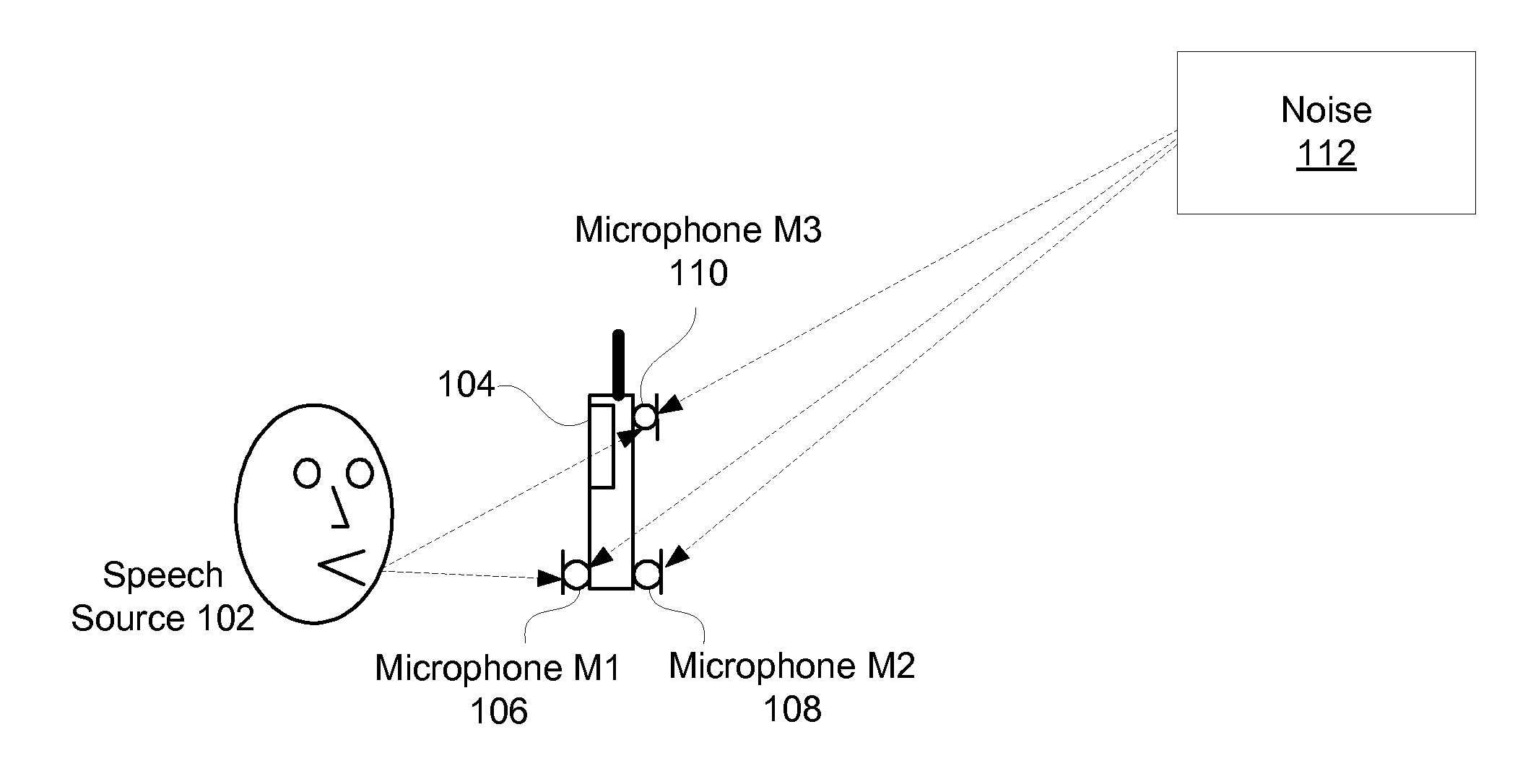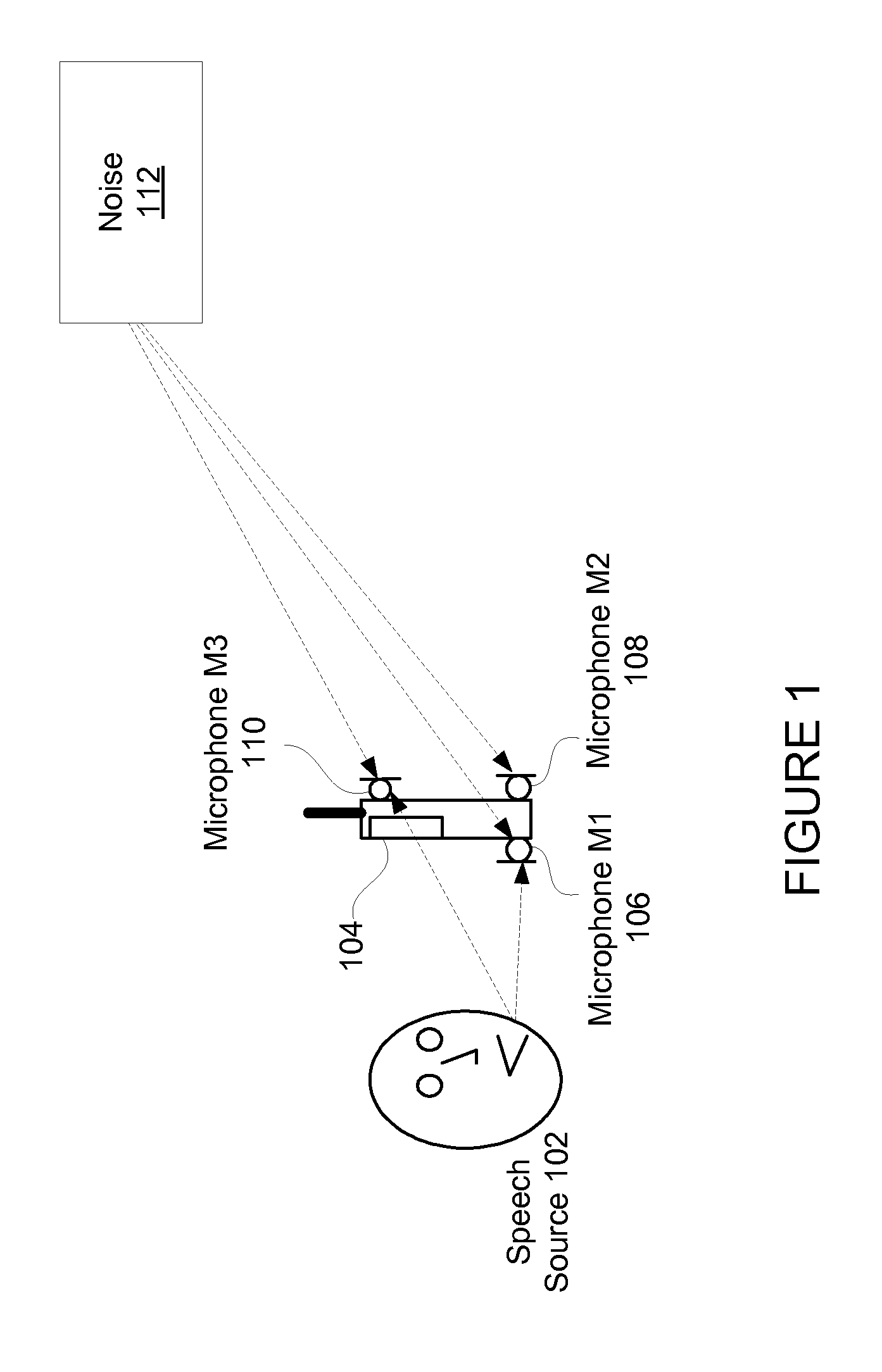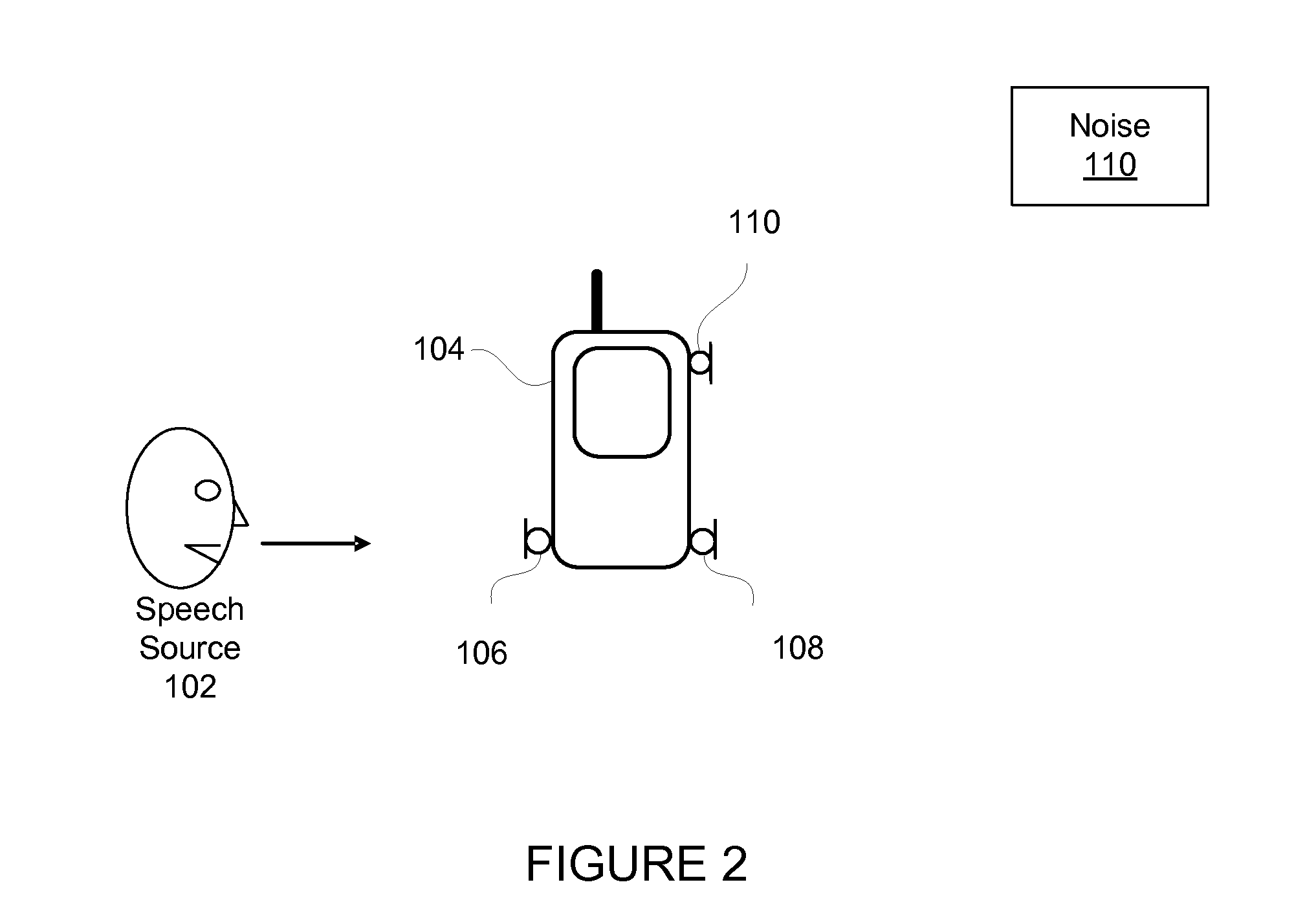Adaptive Noise Reduction Using Level Cues
a level cue and noise reduction technology, applied in the field of adaptive noise reduction using level cues, can solve the problems of inability to obtain both, weak level cues that are too weak to be reliable for localization, and inability to achieve noise cancelation at the same time, so as to achieve the effect of maximizing noise reduction performan
- Summary
- Abstract
- Description
- Claims
- Application Information
AI Technical Summary
Benefits of technology
Problems solved by technology
Method used
Image
Examples
Embodiment Construction
[0015]Two independent but complementary two-microphone signal processing methodologies, an inter-microphone level difference method and a null processing noise subtraction method, can be combined to maximize noise reduction performance. Each two-microphone methodology or strategy may be configured to work in optimal configuration and may share one or more microphones of an audio device.
[0016]An audio device may utilize two pairs of microphones for noise suppression. A primary and secondary microphone may be positioned closely spaced to each other and may provide audio signals utilized for achieving noise cancellation. A tertiary microphone may be spaced in spread-microphone configuration with either the primary or secondary microphone and may provide audio signals for deriving level cues. The level cues are encoded in the inter-microphone level difference (ILD) and normalized by a cluster tracker to account for distortions due to the acoustic structures and transducers involved. Clu...
PUM
 Login to View More
Login to View More Abstract
Description
Claims
Application Information
 Login to View More
Login to View More - R&D
- Intellectual Property
- Life Sciences
- Materials
- Tech Scout
- Unparalleled Data Quality
- Higher Quality Content
- 60% Fewer Hallucinations
Browse by: Latest US Patents, China's latest patents, Technical Efficacy Thesaurus, Application Domain, Technology Topic, Popular Technical Reports.
© 2025 PatSnap. All rights reserved.Legal|Privacy policy|Modern Slavery Act Transparency Statement|Sitemap|About US| Contact US: help@patsnap.com



